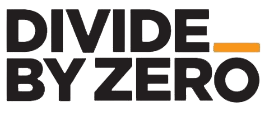How to Convert 3D Models into STL Files
CATIA
Select STL command
Maximum seg to 0.015mm
Select model and select >select yes
Select export >type file name>ok
Catia can import almost any design file format, but only those that include solid data (IGES, Parasolid, STEP etc)
STL files can be saved – with the special add on module. catia V5 is capable of creating stl files from parts(catia PARATS files), not from assemblies (catia product files) or geometrical representation(car files). Therefore, source files, include those saved in a neutral format (STEP OR IGES ,for example)must be saved as parts.
To create a STL file from it, you must first convert it to multi bodied part. Following procedure describe below is one of the several methods of doing this.
Phase 1 : Saving a model design in STL file.
From the file menu, select open and open the source file, if source design was saved as an assembly, it is important as an catia product model
Save the product file
From the file menu, select new>part and give it the name of one of the component
In the product window, select the component and copy it (with the edit menu or right-click pop up menu)
In the part window, place the component
Repeat steps and until you have copied all the components and paste them as a individual part files figure on right shows the result on pasting the components of products into the individual parts file
From a file menu select new>part, and give it name suitable for combined model
Copy each of the individual components (parts) from working files and paste them into the new (combined) model file
Phase 2 : Re-aligning parts (if necessary).
Occasionally, because of the way the original assembly was designed, some of the component may not aligned correctly in the combined part, if so you must align them, using the constraints feature from the insert menu.
Before saving the file it is advisable to review the settings that determine the accuracy of the model and size of file.
From the tool menu select option
In options dialog box displays, the performance tab
Under the general category (on the left), select display
Pay attention to the 3d accuracy setting
Fixed – The lower the setting, the finer the details of the model in the STL file. A very small setting results in a very large STL file. Curves’ accuracy ratio – The higher the setting, the smoother the surface will be, when dealing with complex geometries, especially if surfaces contain sudden small changes with small radii (like the bumps on a golf ball).
Phase 3 : Saving the Part as an STL File.
After preparing the part, as described above, proceed as follows:
From the File menu, select Save As
In the Save As dialog box, select stl from the Save as type pull-down list
Click Save
Since Catia5 supports non-continuous model designs, importing geometry into a part by copying and pasting is not problematic

